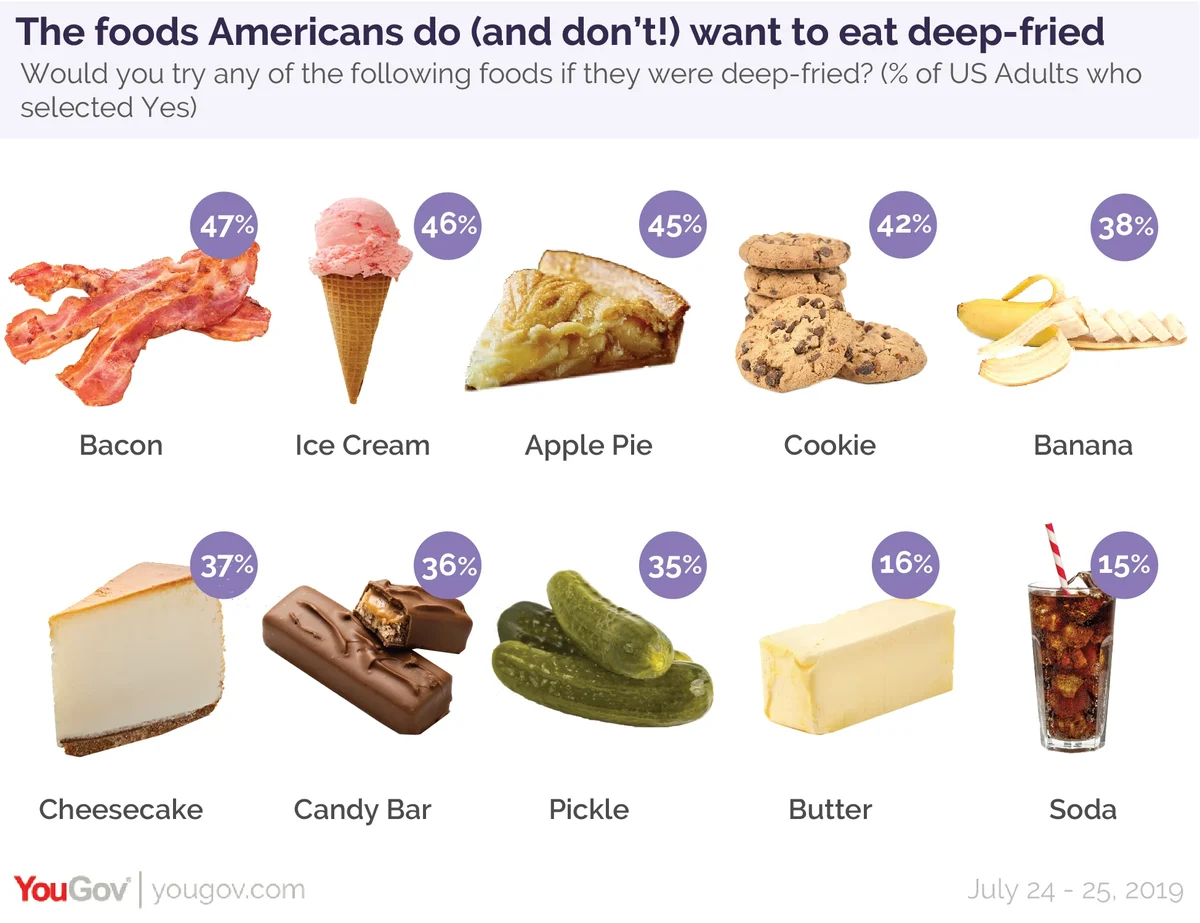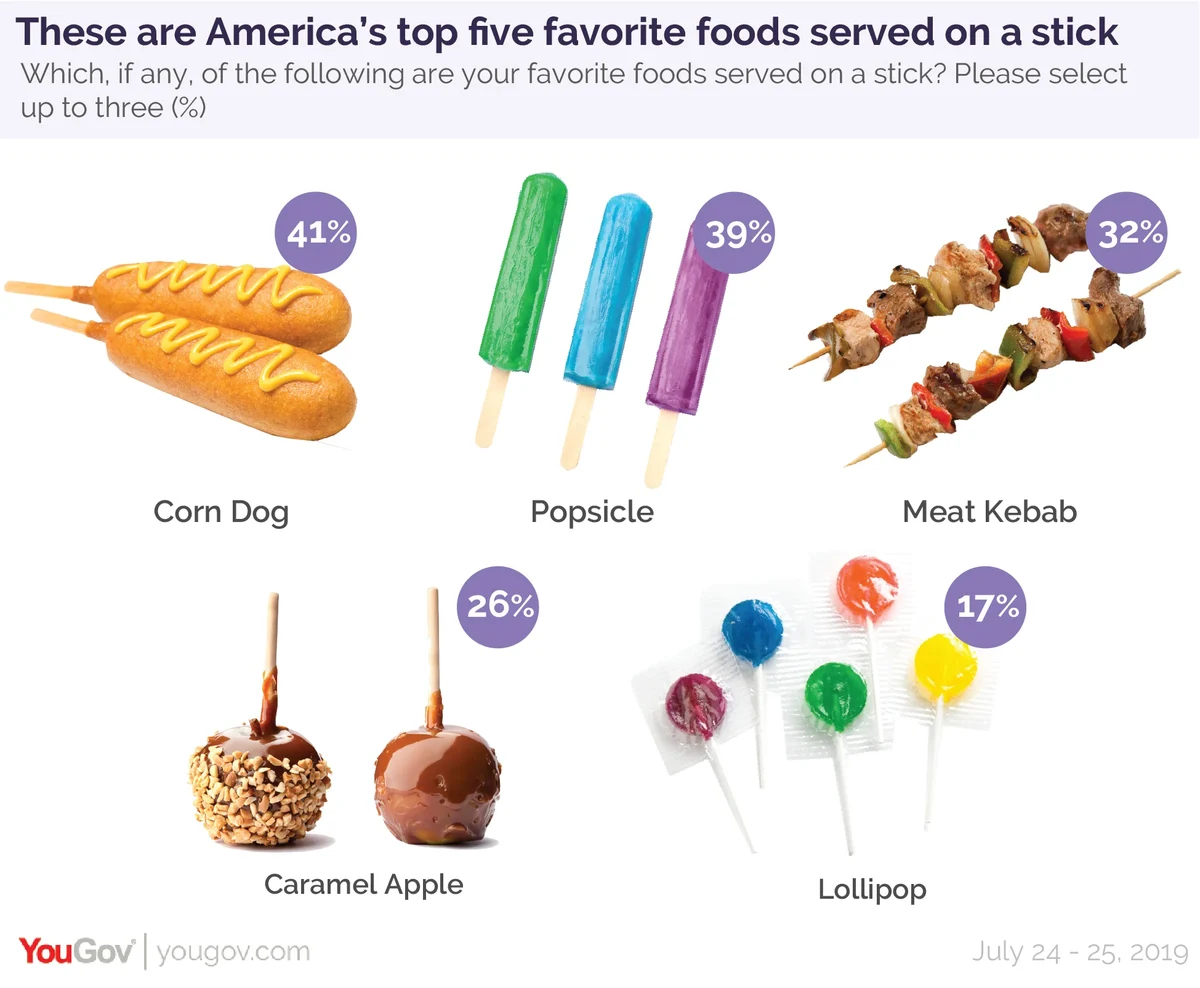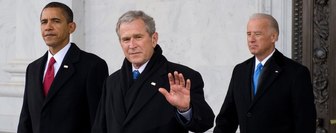It’s August. It’s presidential campaign season. That means two things in Midwestern states like Iowa and Minnesota: Politics and deep-fried everything.
White House hopefuls have already descended on the Iowa Fairgrounds to give stump speeches and chow down. Because nothing beats eating deep-fried state fair foods for politicians looking to connect with voting-eligible Americans and brush up on retail politics.
At the fairgrounds, food vendors often push the limits of deep-fried cuisine with a variety of battered and fried items—including everything from sticks of butter to strips of bacon. In the spirit of state fair season, YouGov asked a representative sample of 1,255 people to share which deep-fried dishes and foods-on-a-stick they love (or would want to try themselves) and their feelings about whether the politicians should sample the breaded bites, too.
Eating state fair food may endear presidential hopefuls to Midwestern voters in particular. Nearly three in 10 (29%) Midwesterners say they think they connect more to a politician eating something unhealthy, compared with something healthy (13%).
Three in 10 Southerners (31%) and 28 percent of people living in the West say a candidate eating junk food is more relatable. A quarter (24%) of Northeasterners would like to see a politician eating something healthy, like a salad, while the same number (24%) thought unhealthy food was more relatable.
And there’s perhaps no more popular junk food than deep-fried American classics. The margins are tight, but 47 percent of Americans want to try deep-fried bacon, 46 percent want to give deep-fried ice cream a try, and 45 percent would go for some deep-fried apple pie.

That being said, there are certain deep-fried delicacies that three-fourths of Americans won’t touch: namely, battered butter and fried soda. Just 16 percent of US adults want to try deep-fried butter, and 15 percent would taste deep-fried soda. American youth are a little more curious, though. One-quarter (25%) of Millennials say they want to try deep-fried butter or deep-fried soda.
In 2016, President Donald Trump and Democratic nominee Hillary Clinton both ate pork on a stick to an Iowa audience’s delight.
It’s the effort that counts to most Americans. While about one in three (27%) adults 45 and younger are prone to say it’s acceptable to scrutinize politicians eating state fair food, a majority still find the practice unacceptable. Among adults over 45, three-fourths (75%) say that is not fair to scrutinize political eating.
Among the 2020 candidates, the Iowa State Fair commitment is no less fierce. Senator Elizabeth Warren pushed her way toward a foot-long corn dog after giving a speech at The Des Moines Register Political Soapbox, and Senator Bernie Sanders shared a dry corndog with his wife.
The two top-tier Democratic candidates may have the right idea: America’s favorite food-on-a-stick is a corn dog, with 41 percent selecting it among their top choices.

Generation X anchor the corndog support (47%), while Baby Boomers are prone to choose popsicles as their favorite food-on-a-stick (48%). Corndogs are regionally adored as well; the only region that did not select a corndog as the best food on a stick was the Northeast. They favor the meat kabob.
At the Iowa State Fair this month, Kamala Harris was spotted eating pork on a stick and Senator Cory Booker has munched on deep-fried pickle. Senator Tulsi Gabbard, a vegetarian, tracked down some deep-fried avocados at the fair to partake in the fried festivities. Former Vice President Joe Biden “only got ice cream” before giving a campaign speech, but he promised Iowans that was just the start.
What deep-fried foods would you dare to try? Sign up to be a member of our panel and see the full survey results here.
Related: America's favorite beer is from Europe
Methodology: Total unweighted sample size was 1,255 US adults ages 18+. The responding sample is weighted to provide a representative reporting sample of the US. The survey was conducted online from July 24 - 25, 2019.
Image: Getty
















